Moshi (850m/2,800ft) to Lemosho Gate (2,100m/6,900ft) by car
Distance: 80km/50mi, 2-3 hours drive (5-6 including breaks); Altitude: 1,250m/4,100ft up in elevation
Lemosho Gate (2,100m/6,900ft) to Mti Mkubwa camp (2,800m / 9,200ft) by foot
Distance: 6km/4mi, 3 hours (4 if the car can’t drive all the way to the gate because of rain); Altitude: 700m/2,300ft up in elevation
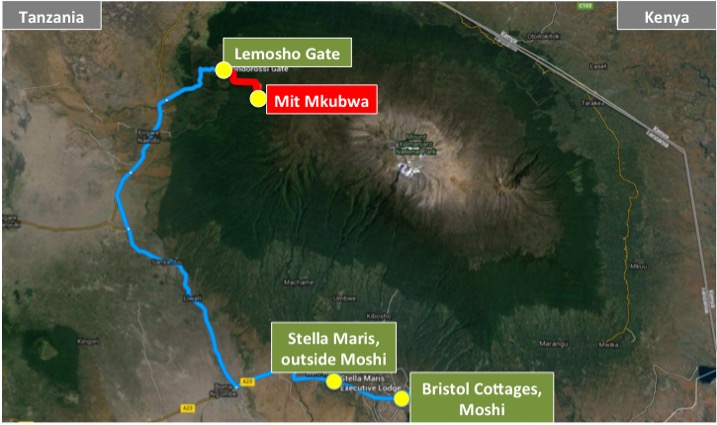
Day 1 of the Northern Circuit (same as the Lemosho route) will be a training in patience. From completing your health checks and weighing your bags in the morning at your hotel, to driving all the way to the Londorossi gate in the west, to having lunch and waiting while your guides organize your porters, to driving on to the final Lemosho gate, it will be late afternoon by the time you finally start your hike.
On the road, you might be lucky to pass people in traditional Maasai clothing , or your bus might stop in the middle of nowhere to wait for a herd of cattle leisurely crossing the road.
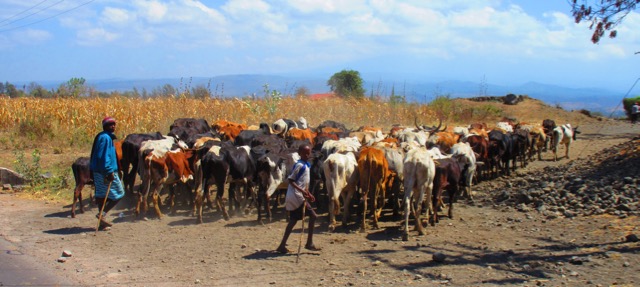
Cow herd crossing the road – photo by Giovanni Baffa Scinelli
After finishing your lunch at Londorossi gate, you you will properly find your porters still queuing up in front of a big scale. They are having their bags weighed. This is good practice in line with park regulations, to make sure that none of their carry loads weighs more than 20kg. Unfortunately, some operators are said to still have found a way around this by bribing park officials. However, operators that participate in the KPAP Partner for Responsible Travel program can be trusted to follow proper procedures. They have an investigative porter on most hikes reporting back to KPAP on the actual procedures followed.
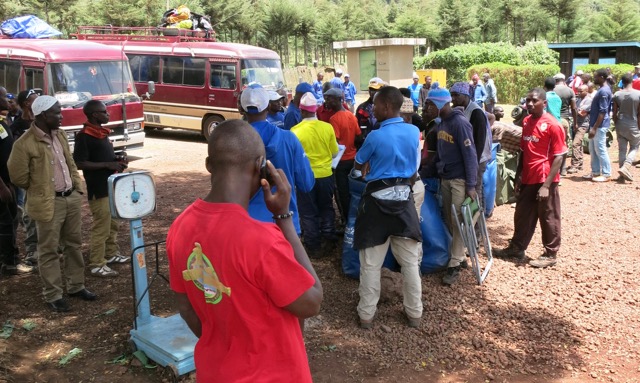
Weighing of bags at Londorossi gate
Throughout your drive, you will see the extent of destruction of the indigenous forest belt. Especially at the north-western slopes, its width has at times been reduced to less than a kilometer in order to make way for forest plantations. And indeed, you will find exotic tree species such as pine and cypress instead of indigenous trees. Only shortly before reaching Lemosho gate, almost without transition, you will finally find yourself amidst a lush rainforest.
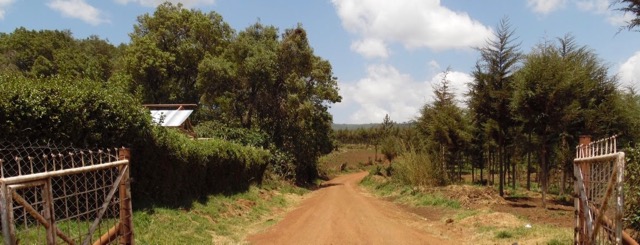
Destruction of indigenous rainforest especially on north-western slopes
Your first day hike will be a rather short three hours starting at the Lemosho gate. A narrow path leads through a lush rainforest with thick jungle growth. If you are lucky, you will se a few black-and-white colobuses, monkeys native to Africa with long bushy white tails. Even if no colobuses, rest assured at least several blue monkeys (your average cheeky monkeys) will cross your path.
You first night’s camp, Mti Mkubwa, is set on a small clearing amidst the jungle. Like on all the coming days, you will find your tents readily set up and your personal bag waiting for you. Now it’s time to enjoy dinner and hypothesize with your fellow hikers about what lies ahead of you.
Photo gallery

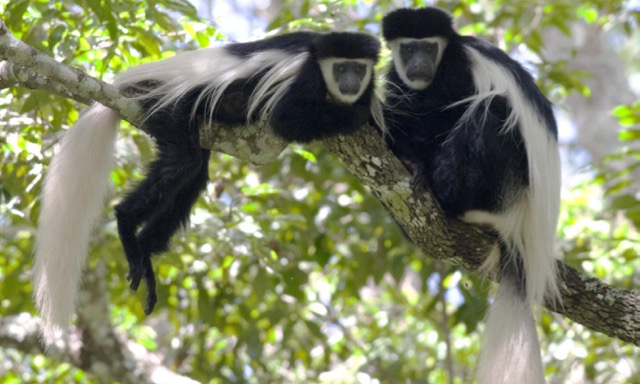
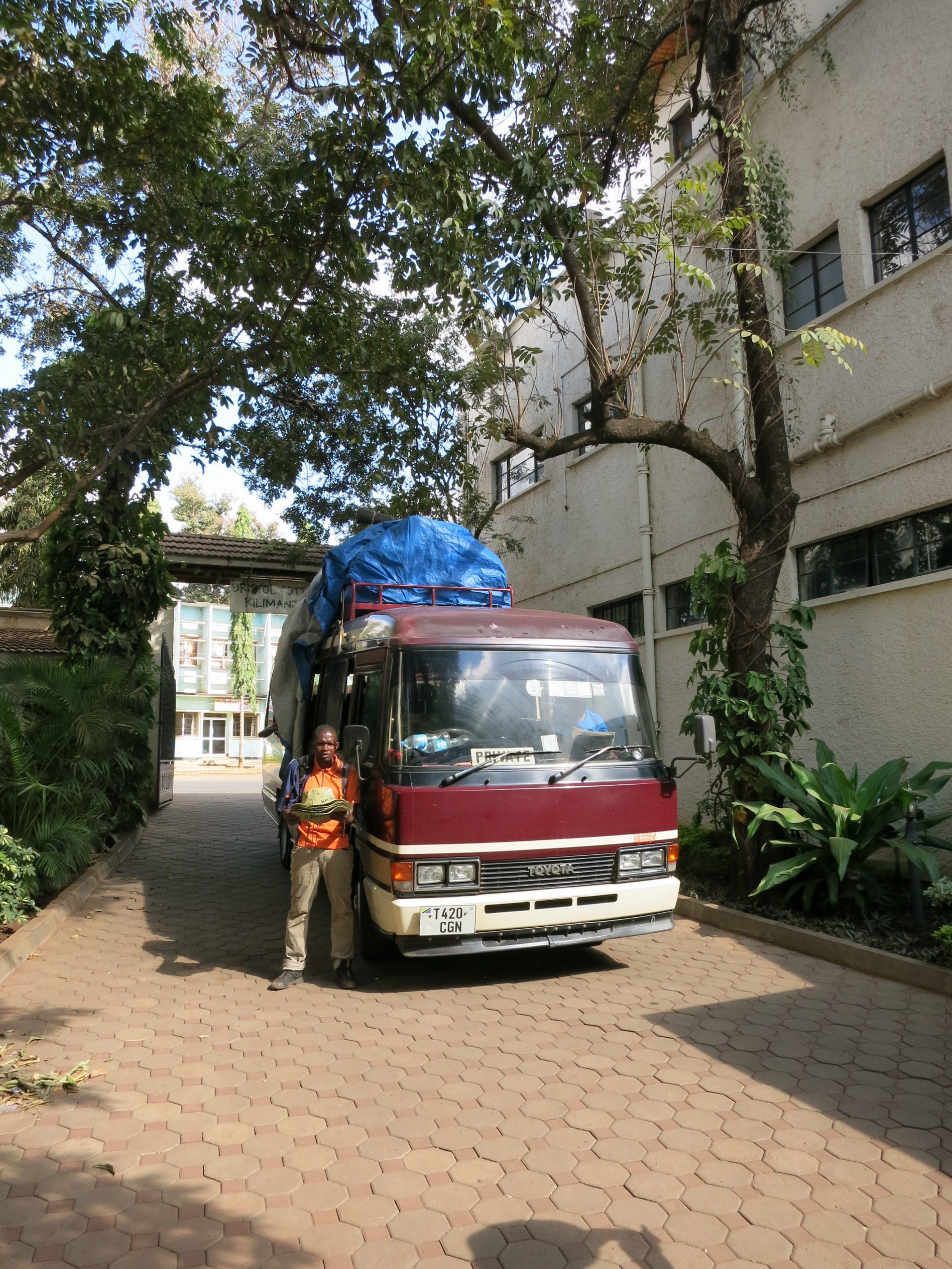

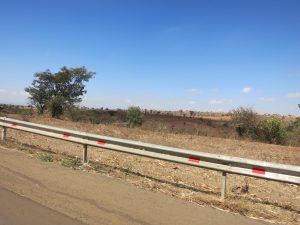
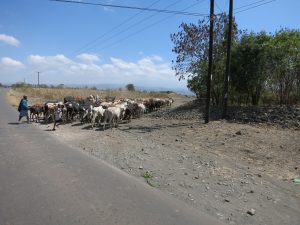
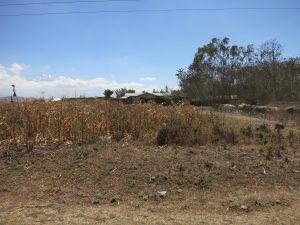
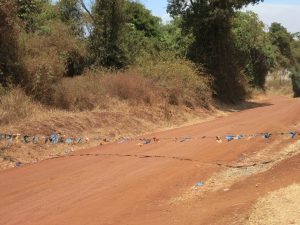

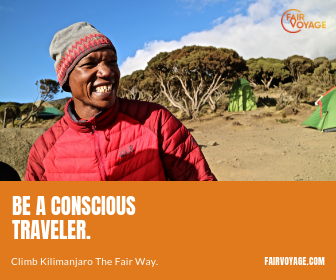




Leave a Reply
You must be logged in to post a comment.